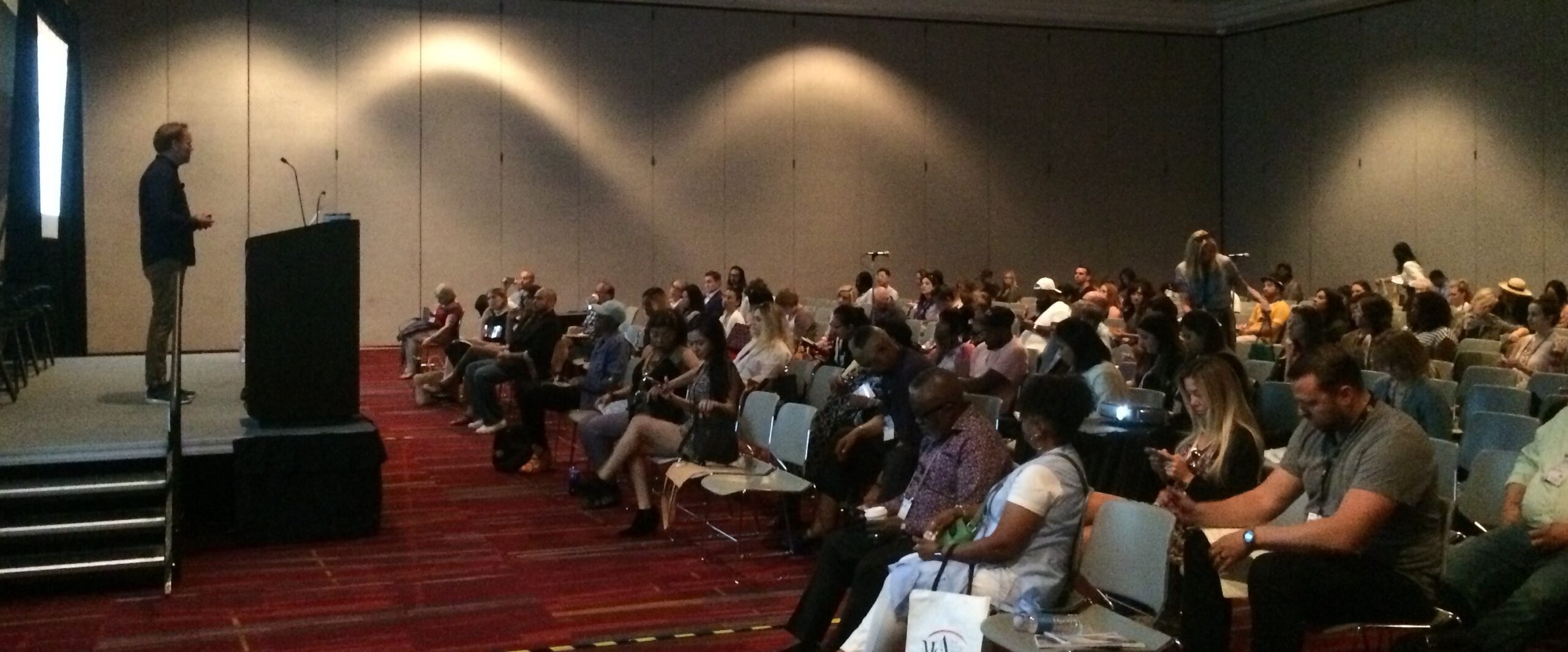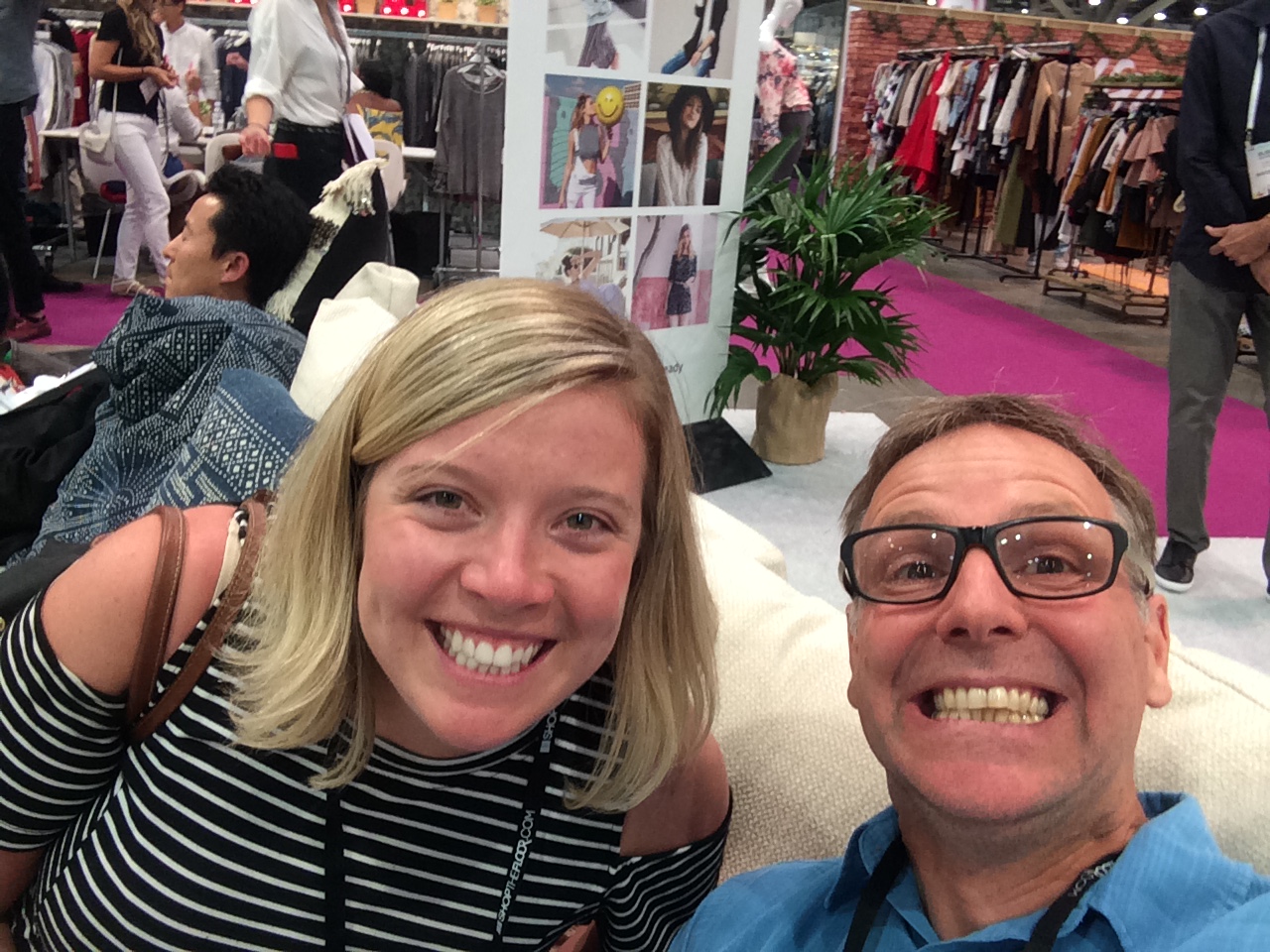My view from MAGIC: Smiles and hope amidst dramatic changes of retail

Derwyn Harris
Talkoot CPO and Co-Founder
Talkoot and Thread founder and CEO Brian Hennessy recently delivered his “How Story Works” talk at the Las Vegas MAGIC show, and both companies were invited as VIP guests. Brian’s talk was a hit, filling a sizable room of eager and optimistic brands and retailers. After his presentation, the line of attendees waiting to pick Brian’s brain about the many topics he touched on was so long it forced us to move the conversation into the hall.

I say the attendees were optimistic because despite the gloom surrounding fashion and retail (many recent articles predict the demise of both), I witnessed many examples of hope. Several of the seminars I attended changed my whole perspective on retail from that of a fish flopping about on dry land to something more akin to a rising phoenix. In each presentation I could sense a collective sigh of relief coming from the other attendees as well. But that doesn’t mean they don’t have their work cut out for them. Times are definitely changing, and that’s the core of the message: change, not death.
Here are a few of the sessions I sat in on and thought were highlights of the conference:
Changing Media Landscape & Influencer Marketing
Description:As companies execute larger-scale campaigns, the outer world is beginning to get sucked into the digital interwebs. We’ll discuss how you can utilize your relationships, budget and creativity to tap into them as well.
Speaker: Nicole Best, Senior Manager of Influencer Programs, Matte Black
Panelists: Kristine Agabaian (Editor-in-Chief & Fashion Influencer), Stephanie Arant (Lifestyle & Fashion Influencer), Molly Hogan (Travel & Lifestyle Influencer)

I’ll be the first to admit that I was surprised by the professionalism of the influencers on this panel. I thought they were just young people with phones and followers. Turns out these influencers are legitimate business folks with professional photographers, rate sheets and an intimate understanding of how social media can accomplish specific marketing goals. For example, Molly walked us through how she uses Instagram’s Live feature only when there is a relevant campaign or call-to-action associated with it.
I was forced to reevaluate my own nonchalant attitude about social media and its usefulness. To me, it feels a bit like a necessary evil with minimal gains or benefits, but these professionals have latched onto the features of each tool, along with a deep understanding of their market, to create a platform from which they reign supreme.
Reimagine Retail
Description: All retail business are now media businesses first, which means a strong content strategy is essential.
Speaker: Syama Meagher, CEO, SCALING RETAIL
Syama blamed retail’s struggles on the business itself, rather than an unavoidable succumbing to uncontrollable market forces. The root of this is what Syama called “cultural homogenization,” or the idea that the combination of big box, and general fear of taking risks, has left a sea of sameness throughout the industry. Retailers and brands are now faced with the choice of moving from a product-focused company ruled by data and cost efficiency, to a media company ruled by story, experience, and identity. She used examples like shifting from an omnichannel mindset (data, distribution, etc.) to a holistic one (culture, experience, etc.), or from presentation (traditional marketing such as billboards) to education (create a community). Her point is that there is a willing, waiting audience who craves diversity, uniqueness and a feeling that the brands they purchase and the experience they have is somehow more meaningful than the cold, one-dimensional feel of a computer screen.
Looking forward to 2018…what will the future bring?
Description: Our panel of independent thinkers bring their crystal ball to determine opportunities for the future of brand development and sustainability.
Moderator: Ilse Metchek, President, CALIFORNIA FASHION ASSOCIATION
Panelists: Richard Kestenbaum (Partner, TRIANGLE CAPITAL LL), Len Pesko (Owner, MODERN PULSE), Michael Rosen (CFO, VELVET, LLC), Sydnee Breuer (EVP, ROSENTHAL & ROSENTHAL), Jennifer K. Rosado (Senior Vice President, Sales Operations & Marketing, JOOR)

With a strong panel of heavy hitters, this session was chock-full of good nuggets and the audience was mesmerized. It felt a bit like an lively church sermon, full of warnings and hope. All I can do is summarize with some bullets:
- All ecommerce is moving towards some form of brick-and-mortar scenario in order to both maximize inventory, but they’re also aiming to increase their direct-to-consumer experience.
- Omnichannel is obsolete. The term “omnichannel” has been used to the point of being overused and potentially misused. The panel called it out as an inadequate way to describe the complexity facing brands as they sell their products today. Most preferred to use terms like “direct-to-consumer” or “holistic approach” to describe the need for brands to better connect with the consumer.
- It’s no longer B2B and B2C; it’s now all ecommerce. Even buyers are consumers and, in time, will go through the same process as consumers.
- In the future, making your product cheaper won’t be as important — it will be all about the ideas surrounding your product, and the degree to which those ideas resonate with your audience.
- An excessive focus on data is obscuring the need to focus on culture. This goes beyond just fashion. Companies of every stripe have been overly sold on the idea that data can solve all their problems. But the truth is, segmentation, demographics and usage patterns only go so far if you don’t have a culture of innovation and or a shared belief that oozes from every corner of your company.
- Time is your biggest constraint, and only technology can help. If you don’t embrace technology now, in the future, more advanced technology like AI will be harder to implement because you are so far behind. I’m personally not 100% on board with technology being a solution to all things, but I do think that not paying attention to technology can result in too big of a gap. This applies to back-office tools for efficiency and scale as well as in-store experiences like iPads and fancy light systems as found in Reformation’s factory store in Los Angeles.
Beyond the seminars, we had a chance to walk through the show and talk to about 30+ different brands. Our interactions were usually with marketing professionals and, every so often, sales leaders. The two consistent messages we heard were: 1) All brands are seeking ways to not just tell their story, but have their story understood by their audience, and 2) Brands are struggling with aligning teams across marketing, story and product lines.
My experience in working with our customers is that without the latter in place, the former becomes an exercise in futility.

